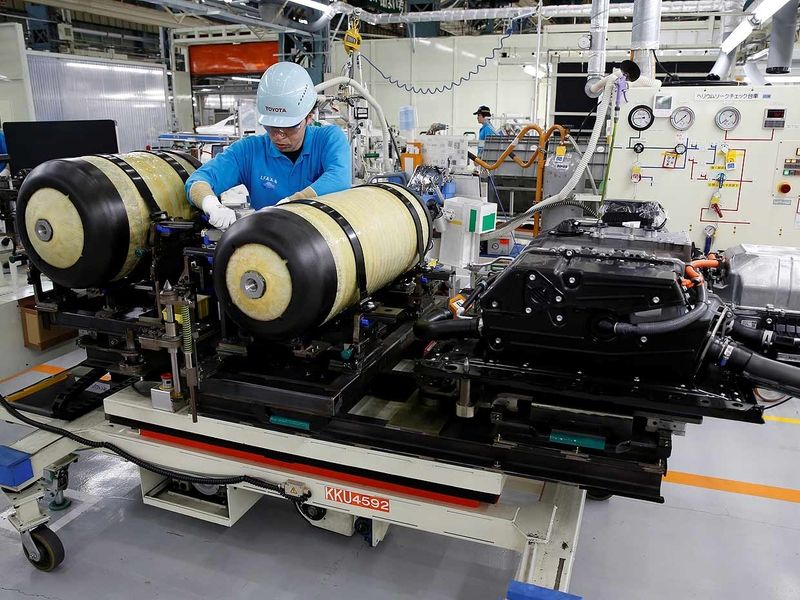
Most of the money spent on hydrogen fuel cells has been aimed at reducing the precious metal content, such as platinum, to lower the cost of the electricity-producing device. Automakers have made massive progress in that regard, as well as in reducing the size of the fuel cell stack.
But there is one part of the fuel cell that no automaker company ever talks about: high-volume production. That’s because most of the fuel cells built for automobiles today are hand-made by technicians.
As of 2018, Toyota was building about seven Mirai fuel cell vehicles per day, all by hand.
The news Tuesday of General Motors’ deal with startup truckmaker Nikola provided no details about the technology GM plans to embrace to crank out fuel cell stacks quickly and with zero defects. The stack, you will recall, contains membranes and thin metal plates, and much like the cells in a battery pack, the more the cells are stacked in a fuel cell, the more electricity it will produce.
In manufacturing terms, this is as close to brain surgery as we’ve ever seen in a powertrain component. Not only is there no room for manufacturing tolerances — every internal component must fit and align perfectly for the cell to produce the correct amount of electricity safely — but the production site has to be free of dust, dirt and anything else that could contaminate a fuel cell membrane.
It is going to take a huge and economically viable fuel cell to produce enough electricity to move a fully loaded Nikola semitruck down the road at highway speeds. It won’t be economically efficient to assemble the stacks in these trucks by hand.
In the past, GM has commented sparingly on its fuel cell production technology but has acknowledged that being able to produce stacks with production machinery — not by hand — will be one key to making them affordable. When GM and Honda three years ago hatched a fuel cell partnership, all the talk was on the cells and the accompanying hardware, not the manufacturing.
It’s very possible that GM and Honda have made some fuel cell stack production breakthroughs that replace slow-moving technicians with fast machinery that bring costs down further. For now, GM isn’t commenting on the manufacturing technology it will use for Nikola’s trucks, spokesman Dave Barnas said.
Although progress on making fuel cells smaller, lighter and more efficient has been steady, they won’t be commercially viable until manufacturing technology ensures they can be made flawlessly at high volumes.